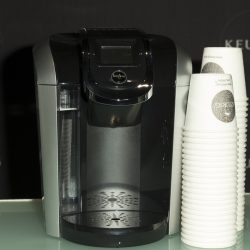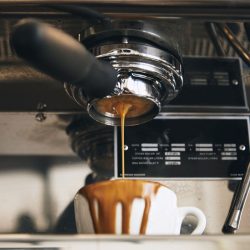Getting to know a new kitchen appliance can feel endless at times. Do you have a Keurig that keeps dripping whenever you brew coffee and don't know how to fix it? Is something on your machine broken, or is there simply too much water inside? We'll cover these questions below.
One of the main reasons a Keurig drips after you brew coffee is that you overfilled its water reservoir. Typically, you want to fill the reservoir up to the dotted line, to avoid overflow.
Another cause for dripping is that your system has a clog. That means you will need to descale it, which is pretty easy, considering Keurig sells its own descaling kit.
As we start, we will cover all things Keurigs and discuss how to stop one from dripping. Whether you're new to this brand or a veteran customer, we're here to offer some help. With that said, let's dive right into this topic!
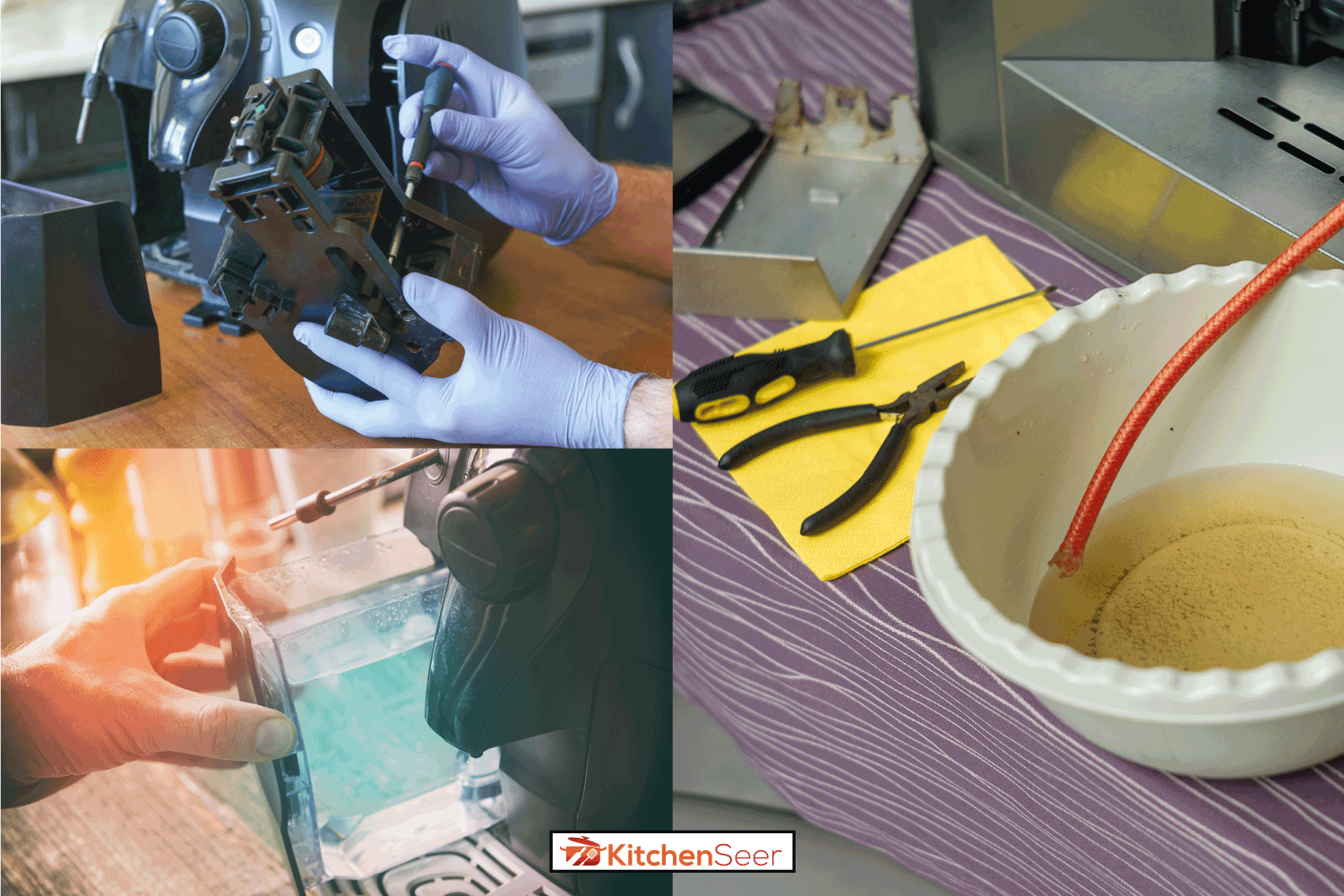
What Causes A Keurig To Drip?
For anyone with a dripping or leaking Keurig, you may wonder why water always seems to pool around it. Generally, this is because there is too much water inside the reservoir, which is an easy fix.
As we mentioned, you want to fill your Keurig's water reservoir to the dotted line, and not a drop more, as this can cause leaking. Furthermore, too much water pooling at the base of your appliance can be dangerous for the electricity involved, so be mindful of that.
Another reason a Keurig drips is that it needs to be cleaned. Usually, you want to descale a Keurig (or any other espresso machine) every few months.
Failing to do this will result in clogs, leaks, and even broken parts of a Keurig.
Third, you could have a damaged or broken gasket inside your coffee machine. If you try pouring out some of the water in the reservoir and descale but still have leakage, it's probably the gasket.
If that is the case, make sure to reach out to Keurig directly and ask for a repair/replacement. This brand is well known for its customer service, whether your machine is under warranty or not.
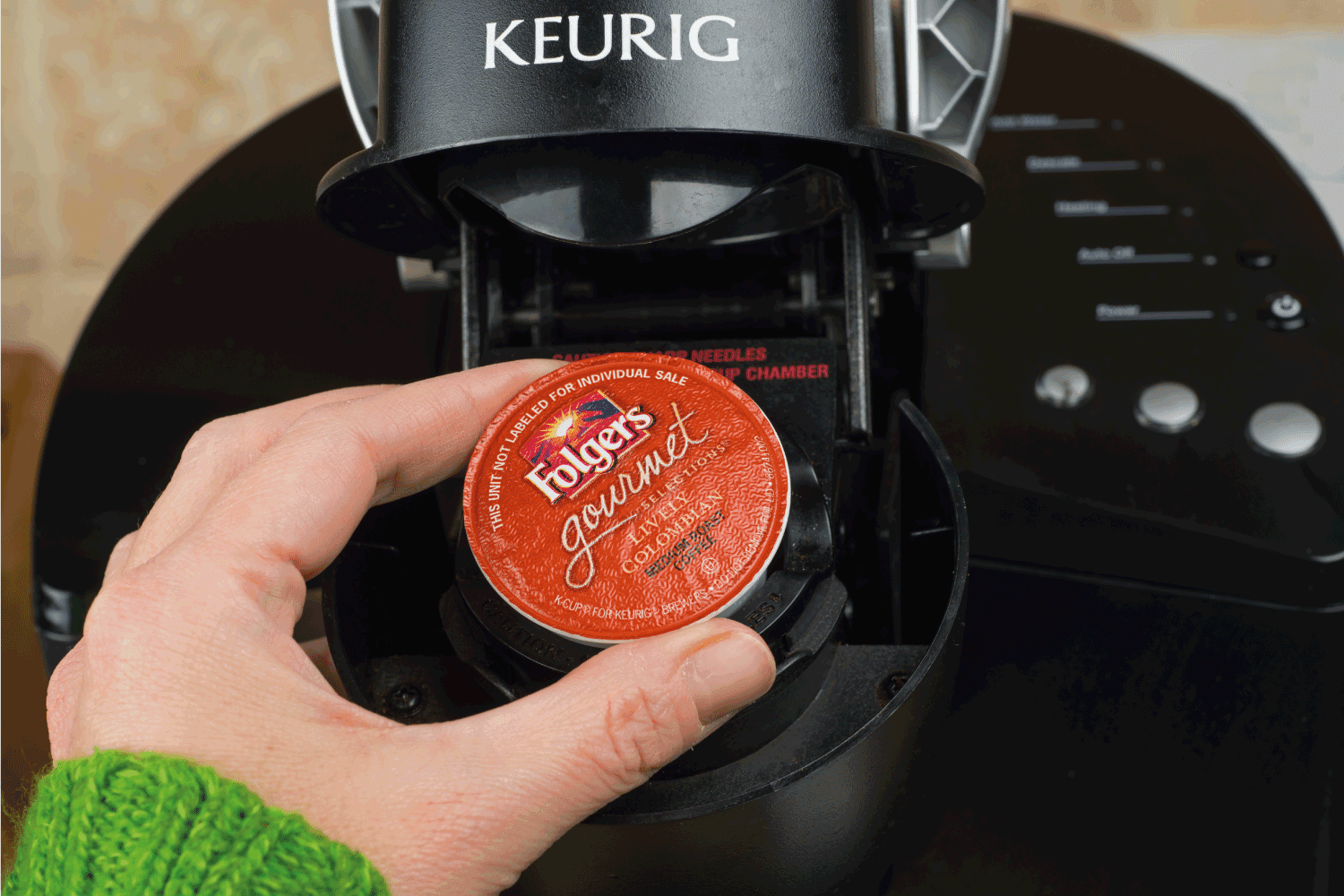
How Do You Fix A Keurig Leak?
If you have figured out what is wrong with your Keurig, it's time to repair it. As we said, this could be as easy as dumping out some of the reservoir water, but again, this varies.
If you believe there's a clog or your machine is dirty, it's time to grab a descaler. Luckily, Keurig sells a specialty kit that descales all of their models, so that's what we recommend.
Keurig 3-Month Brewer Maintenance Kit
This kit comes with a descaling solution, water filter cartridges, rinse pods, works with all Keurig brewing systems, and keeps your coffee machine clean for three months.
Check out this kit on Amazon here.
You want to use this kit according to the instructions every 3-6 months. Like any machine, your Keurig will have build-up from the water/coffee it filters, so cleaning is imperative.
Additionally, you may also need to check around your espresso maker for any defects/damage.
If you notice a broken or loose gasket, it's best to contact Keurig for the next steps. If your appliance is under warranty, trying to repair this yourself could void coverage, so it's best to leave it to the professionals.
Here is a helpful video tutorial on the basics of fixing a leaking Keurig:
How Do You Clean The Needle On A Keurig?
If you notice the needle on your Keurig has coffee or debris stuck inside it, you need to clean it ASAP. Luckily, this ">process is pretty simple.
To begin, you'll need the following:
- Large ceramic mug
- Clean paper clip
- Access to a sink
Once you have your materials:
- Turn off your Keurig, unplugging it from the wall.
- Remove the pod holder from your brewer.
- Remove the funnel from the pod holder.
- Find the tube underneath the pod holder.
- Using a clean paper clip, fish out any debris.
- Clean both your pod holder and funnel in the sink.
- Locate the entrance needle on your Keurig.
- Carefully insert your paper clip into the needle.
- Place the pod holder back into your appliance.
- Plug your Keurig back into the wall and turn it on.
- Place your mug onto the drip tray and lower the pod holder.
- Run two water-only brews using the largest cup size.
Remember, the needle on a Keurig espresso machine is sharp, so be cautious while cleaning it. Additionally, it's essential to dry your pieces before attaching them back to your system, so we recommend air drying or wiping them with a clean, dry cloth.
What Happens If I Don't Clean The Needle On My Keurig?
Although upkeep is always a good idea, it's not always necessary to clean a Keurig's needle. Generally, there's no reason to do this unless you can see debris caught in it.
However, if you notice decreased coffee flavor or issues during the brew cycle, you might want to give the needle some TLC. Again, there's no exact timeline for this, as everyone uses their Keurig differently.
With that said, it may be a good idea to clean the needle on your Keurig once a year, so that's a good schedule to create for your maintenance. You can even do this before you descale, so feel free to make your own decision.
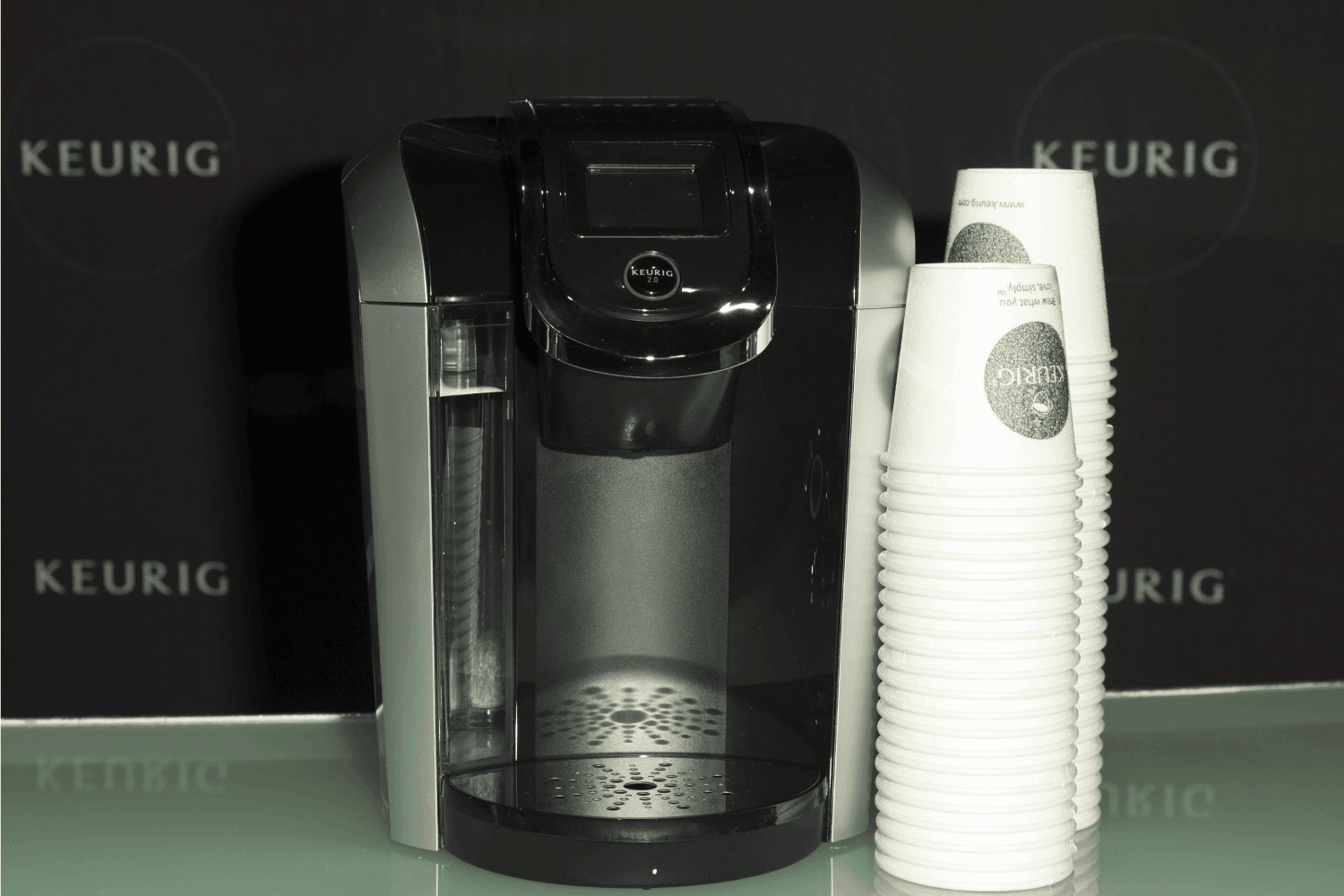
How Often Should You Descale A Keurig?
According to Keurig's website, it's best to descale your espresso machine every 3-6 months. Furthermore, some Keurig brewers will have a descale light, which will turn on when it's time to clean.
If your system doesn't have a descale light, it's good to keep track of the last time you descaled to prevent leaks and other problems.
You also want to consider how often you use your appliance. For example, someone who makes coffee 2-3 times a day will need to descale more often than someone who makes one cup.
If you don't run a Keurig for a while, that is another reason to clean it, as bacteria can grow inside. Even though these espresso makers are high-tech, that doesn't mean they are 100% germ-free.
Additionally, you might want to wash out the water reservoir every month or so to prevent bacteria and other debris from getting into your coffee.
Some water is heavily treated with chemicals, which can cause build-up in the tank of a Keurig. As we covered, that can create leaks and drip, which no one wants to deal with.
Will A Keurig Break If I Don't Descale It?
Yes, a Keurig can break if you don't descale it. Like most appliances, a Keurig needs proper upkeep to run efficiently. That means descaling every three or so months, regardless of how much you use your machine.
In addition, failing to descale a Keurig routinely can cause internal damage, like broken gaskets. You could also see dripping after each brew, water pooling at the bottom, or an electrical short.
Considering that a Keurig is a mechanical device, having water reach it's motor and wiring can be deadly.
To prevent this, we recommend keeping the base of your Keurig clean and dry at all times. If you see water pooling between brews, pour some of the excess water from its reservoir.
If all else fails, you can also contact Keurig here to get product support from their team.
Do Keurig's Come With A Warranty?
Yes! All Keurig's will include a one-year warranty starting at the date of purchase. The company promises to repair or replace any systems that run into problems due to quality under normal home use.
Typically, Keurig will send a warranty card alongside their brewer, which you can fill out online. It's crucial to do this, as you will need to register your product to get support later on.
That said, if you buy a Keurig from a third-party retailer, like Amazon or Target, you can log onto their warranty site, fill out the required information, and have your system be covered for the one-year.
During the first 365 days of owning your Keurig, you will be covered for damage/defects, as long as they are due to normal wear and tear.
So if your espresso maker leaks and shorts out, Keurig will replace it. On the other hand, if you drop your Keurig on the floor while moving it, that might be a different story.
Again, this is entirely up to the agent you speak with, so remember to be friendly.
How Long Should A Keurig Last?
On average, you can expect a Keurig brewer to last between three and five years. Of course, this varies by household, especially if you clean or don't clean your appliance according to its instructions.
As we covered above, it's vital to descale a Keurig every 3-6 months. Although this can seem redundant, failing to maintain your brewer will reduce its lifespan.
Even if you don't make coffee every day, bacteria and water build-up is present in your Keurig. That can lead to mechanical issues, leaks, and even make you sick.
So make sure to grab some descaling solution and run a cleaning cycle periodically to keep you and your Keurig healthy.
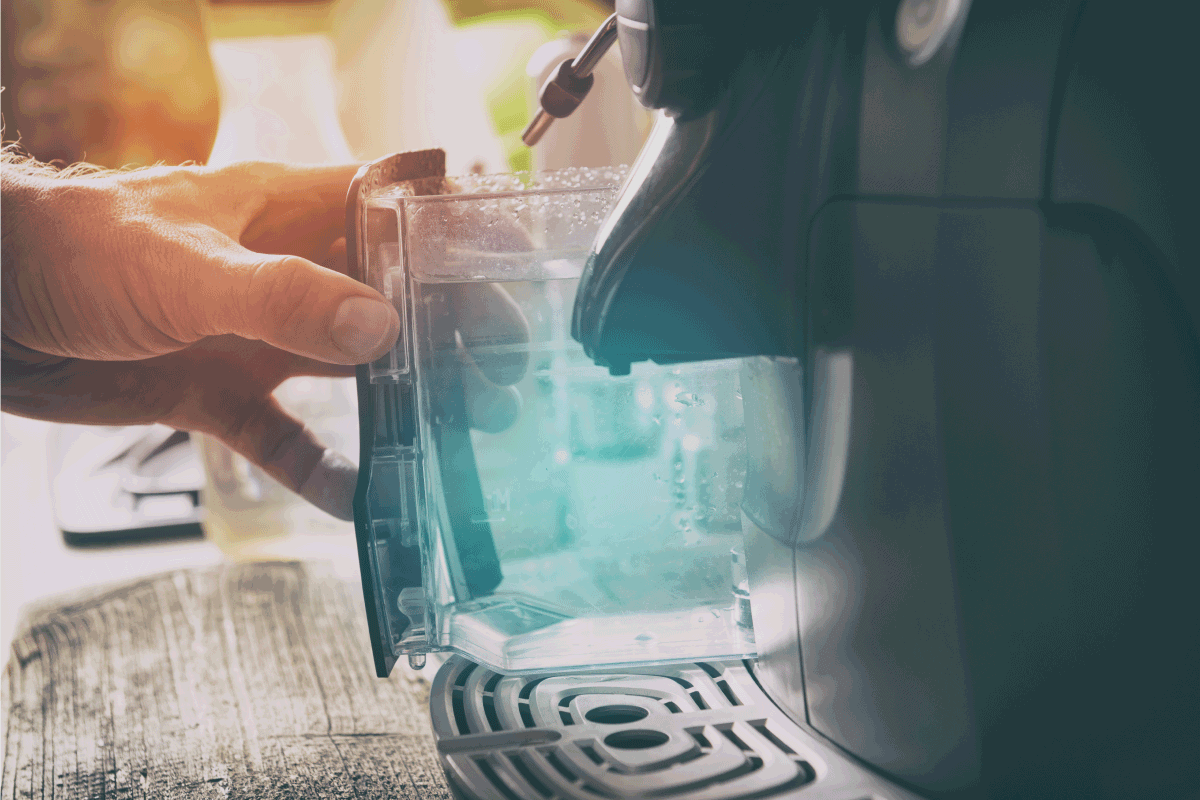
To Wrap Up
Whether you have a leaking Keurig or want to avoid this, it's essential to maintain your espresso machine. We found that various things will cause a Keurig brewer to drip after making coffee.
These include an overfilled water reservoir, clogged/dirty machine, and even broken or defective gaskets. Luckily, there are simple ways to remedy these issues, including contacting Keurig directly.
Regardless of which model you have, register it for one year of warranty coverage, and don't forget to descale every 3-6 months!
Made it to the end? Check out these helpful related Keurig posts below!
Which Keurigs Make Iced Coffee? What About Cold Brew?
Why Is My Keurig Leaking? [And How To Fix It]
How Tall Of A Cup Can Fit Under A Keurig?




![Keurig k-cup coffee maker with three k-cup pods. How To Clean A Keurig Needle [With And Without A Tool]](https://kitchenseer.com/wp-content/uploads/2021/07/Keurig-k-cup-coffee-maker-with-three-k-cup-pods.-How-To-Clean-A-Keurig-Needle-With-And-Without-A-Tool-250x250.png)
